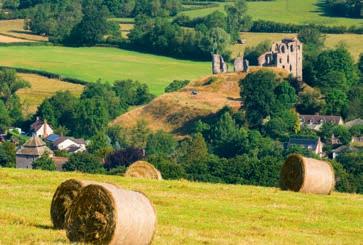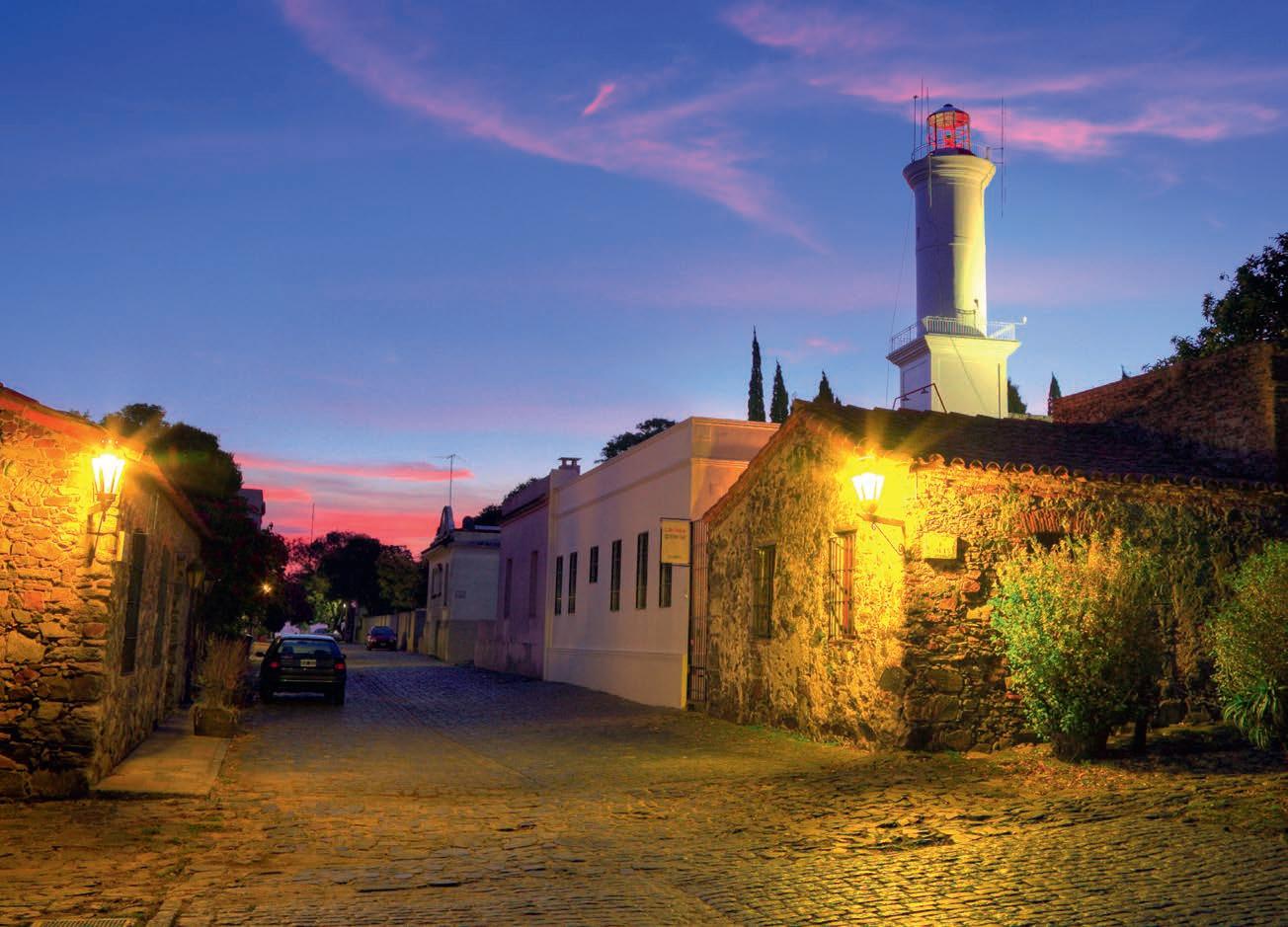
9 minute read
World Heritage
Colonia del Sacramento
Uruguay’s city on the banks of the Río de la Plata has had a wild history; it’s a story written in the cobbles and buildings of its UNESCO-listed centre, writes Chris Moss
Advertisement
Shining a light on the past
(top) The construction of Colonia’s 19th-century lighthouse, built amid the ruins of the Convento de San Francisco, replaced the old chapel tower, which had been used by ships to navigate the Río de la Plata for years until the convent burned down in 1705 When thinking about the 19th-century British invasions of the Río de la Plata (River Plate; 1806–07), Argentines often wonder what it would have been like to have been part of the British Empire. But they rarely consider the more likely counterfactual: that Brazil might have extended its power southward and absorbed its large neighbour into its already considerable vastness.
Uruguay’s Colonia del Sacramento, on the left (north-east) bank of the Río de la Plata, across from Argentina, is an evocative reminder of a time when the latter was very possible indeed. Portuguese Brazil, vying for territorial and maritime dominion with the Spanish, founded the original town here, Nova Colônia do Sacramento, in 1660 as a military outpost. It was a strategic site, allowing control of the river mouth within sight of Buenos Aires as well as offering additional protection for Brazil’s southern frontier.
The colony was hot property and changed hands several times until 1828, when Uruguay gained its independence. Today, the historic quarter of Colonia – as it’s known locally – is listed by UNESCO for its well-preserved “fusion of Portuguese, Spanish and post-colonial” architectural styles. Lots of weekenders from Uruguay and “Colonia packs in a surprising number Argentina, and significant numbers from Brazil, come to stroll the narrow cobbled streets of the quaint, tree-lined of museums for old centre, which is laid out irregularly such a little town” (unlike the grids of most Spanish colonial settlements) on a small peninsula that sticks out into the river. Colonia also packs in a surprising number of museums for such a little town. Get your bearings at the Museo Municipal, off the Plaza Mayor, where there’s a scale model of the settlement as it looked in 1762, as well as a re-creation of a colonial drawing room. On either side of the museum are the Casa Nacarello and Casa del Virrey, the former a colonial-era house with
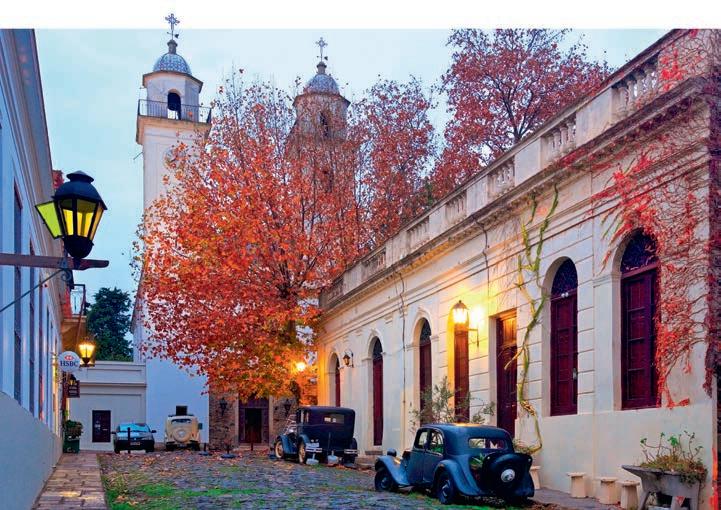
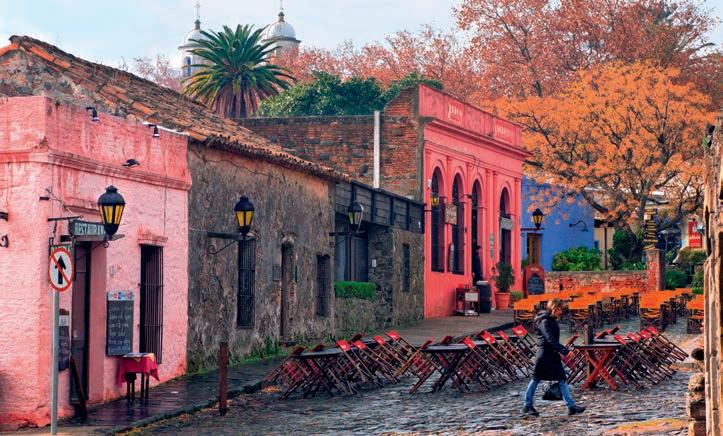
Alamy
NEED TO KNOW
Location: South-western Uruguay, 180km west of capital Montevideo, 50km from Buenos Aires (Argentina). Getting there: There are no direct flights from the UK to Uruguay. Iberia (iberia.com) flies direct to Montevideo from Madrid. British Airways (ba.com) has connecting flights from London Heathrow to Ezeiza International, near Buenos Aires, from around £608 return. From Buenos Aires most people take the fast ferry to Colonia del Sacramento, which takes 75 minutes; from £47. Getting around: The city is small and walkable, though cobblestones make it bumpy going. To explore the region, there are good bus services along the coast. While a tour is useful, Uruguay is one of the easier South American countries to explore independently. A hire car is handy if you want to visit the Pampas or northern beach towns. When to go: Year round, but summer (December–March) can be very hot. Accommodation: Charco is a boutique-style hotel in a colonial building perched on the River Plate and within easy walking distance of the centre. The restaurant is excellent. Doubles from £113pn; charcohotel.com Further information: Uruguay (Bradt Travel Guides; 2017) by Tim Burford
period furniture, the latter the foundations of one. A short walk away is the Espacio Portugués, another old property, housing displays of Portuguese porcelain, furniture and weapons.
On the south-west corner of the plaza are vestiges of the 17th-century Convento de San Francisco, within which stands the 19th-century Faro (lighthouse) – probably Colonia’s best known landmark. It’s worth ascending to the top to take in the view; you’ll see how extraordinarily wide the River Plate is and, haze permitting, Buenos Aires on the far shore.
On the other main square, the Plaza de Armas, is the Basilica del Santísimo Sacramento, said to be Uruguay’s oldest church. Founded in 1680, it was rebuilt twice under Spanish rule.
For a great photo, the reconstructed city gate offers a dramatic setting. From this spot, a fortified wall runs south along the pedestrian-friendly Paseo de San Miguel and down to the river. The Centro Cultural Bastión del Carmen is built around a section of the fortifications. As well as a theatre and gallery spaces, it has riverside lawns around the back, enlivened by outdoor sculptures and an industrial chimney dating from the 1880s. Uruguayans kick back to enjoy eternal rounds of mate here.
If you’re a museum buff, you’ll want to see the Museo del Azulejo on the corner of Misiones de los Tapes and Paseo de San Gabriel, a tiny 17th-century stone house with a collection of French and Catalan tiles. There’s also the Museo Indígena, which showcases a collection of stone tools that belonged to the Charrúa, said to be the first indigenous peoples the Europeans met when exploring the river in the early 16th century, as well as the Museo Paleontológico, which exhibits glyptodon shells and other locally excavated finds from a private collection.
Colonia lives up to its name; it still looks and feels like another era. In a part of South America where pre-19th century architecture is rare, that makes it a very special place.
Step back in time
(top–bottom) The Basílica del Santísimo Sacramento rises over the old town and its restaurants, where you can try a chivito (steak) sandwich, arguably Uruguay’s “national dish”; the old city gate stands proud
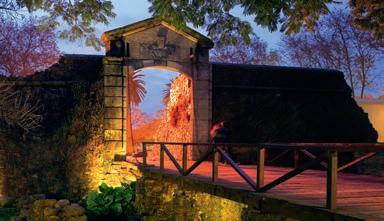
Go wild in Uganda
Uganda is a country every bit as fascinating as it appears. From spotting chimps and mountain gorillas in their natural environment to bumping down white-water rapids, to watching a traditional dance in a rural village, there are so many travel adventures to be found in this African nation.
You’re invited to explore this compelling part of the world during a very special evening of virtual travel.
The event will give you first-hand access to our panel of experts, who will bring to life the huge biodiversity, cultural variety and adventures that you can find in Uganda. You will also have a chance to ask them your burning questions. Expect a thrilling evening filled with the sights and sounds of a country where the travel experiences are as diverse as its unspoilt landscapes.




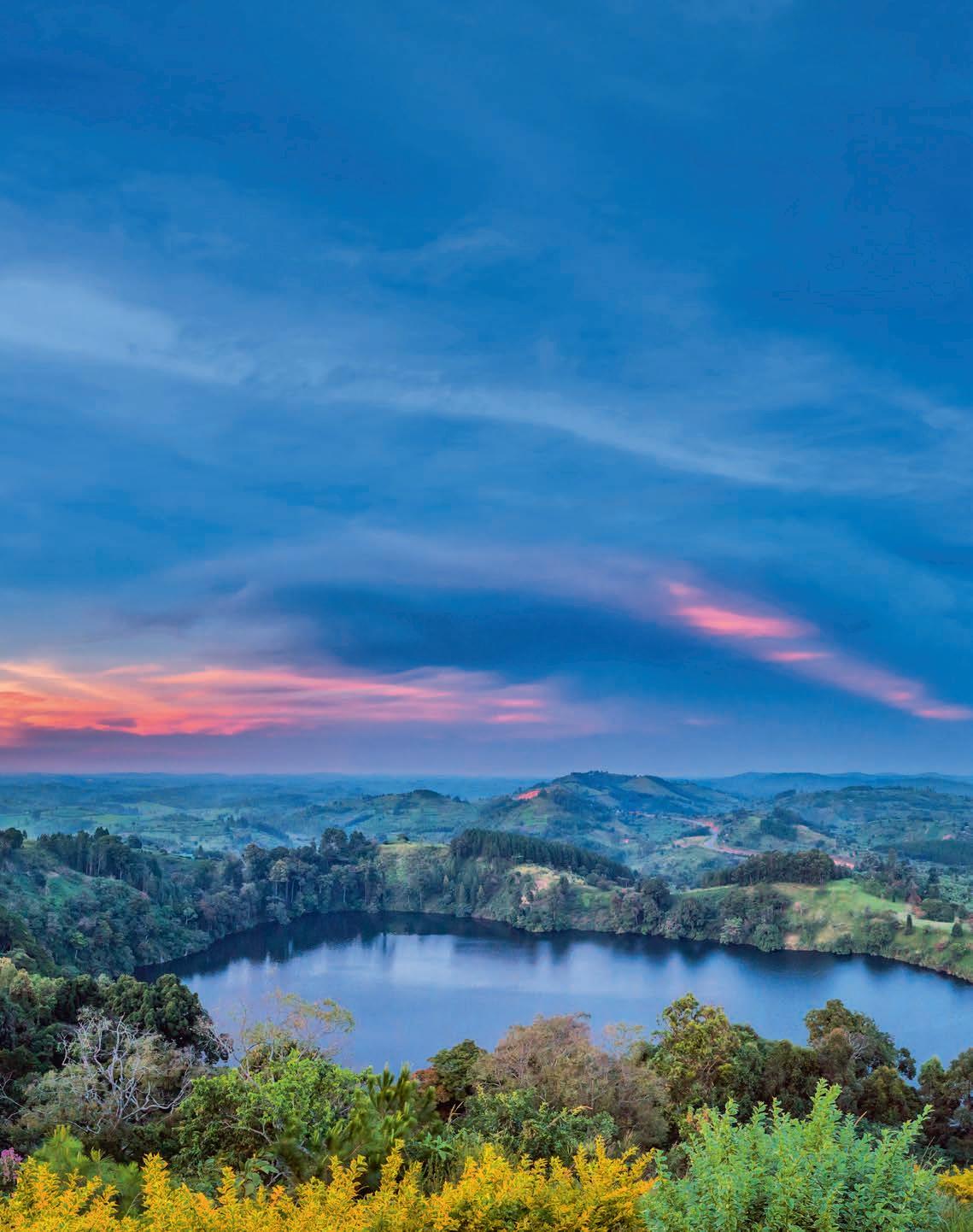
20 April 2022, 6:30 PM
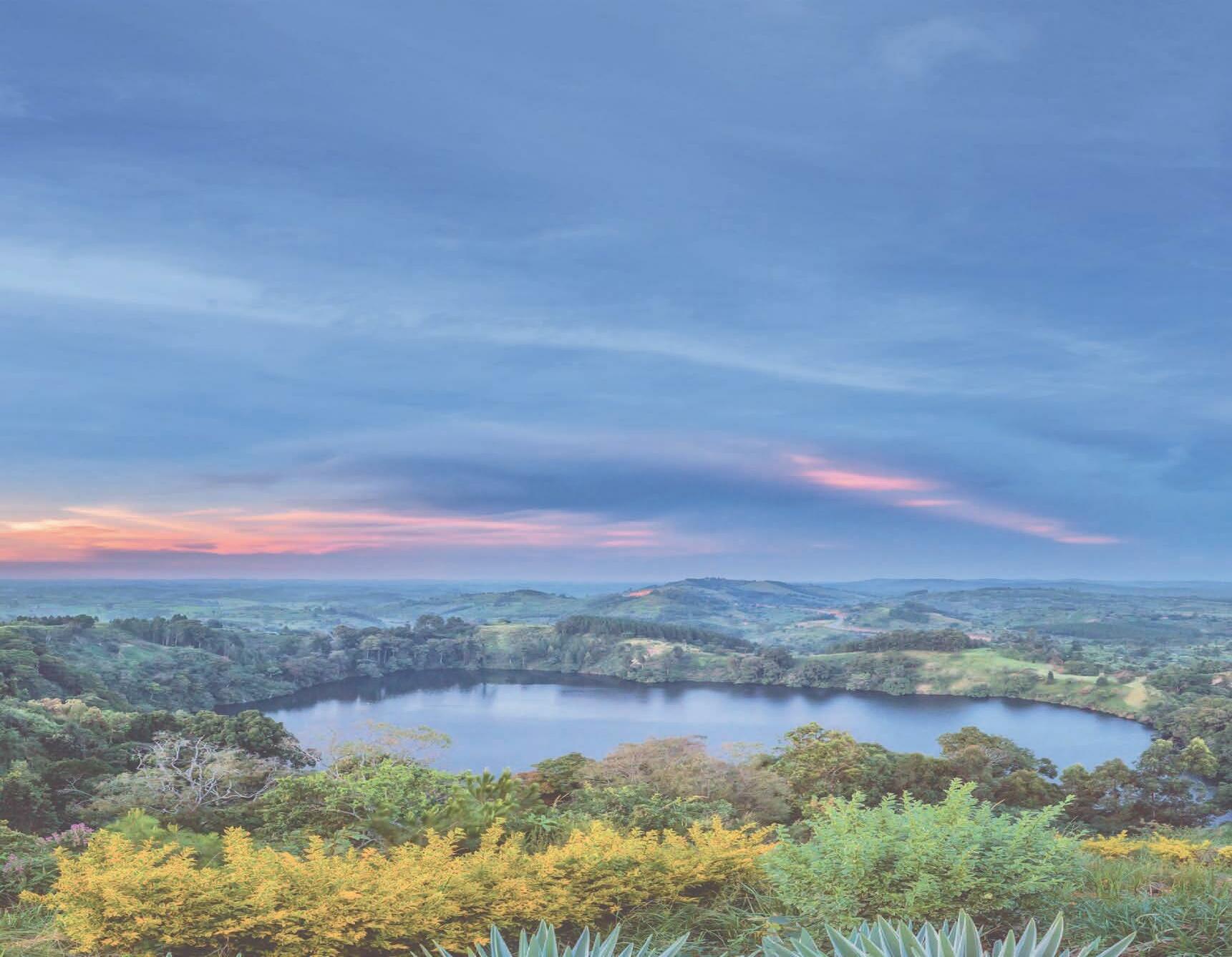
For more information and to book your free place, head over to wanderlustmagazine.com/events
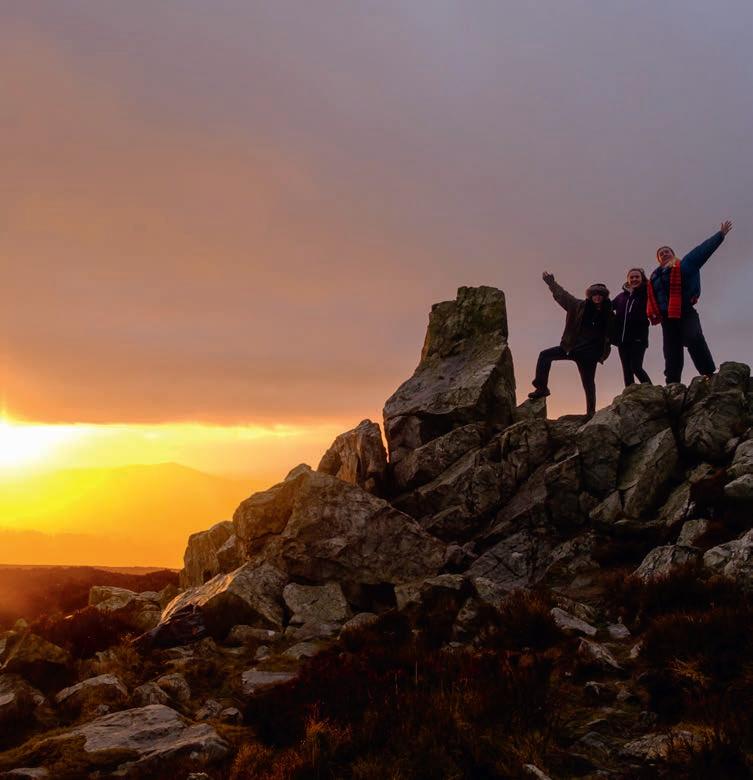
Revealing rambles
(clockwise from this) The Shropshire Hills Area of Outstanding Natural Beauty covers almost a quarter of the county; the world’s first ever iron bridge was erected over the River Severn in 1779; Clun Castle was originally built by William the Conqueror; The Mere at Ellesmere is the largest of all of Shropshire’s meres; historic Shrewsbury is home to more than 800 listed buildings
SHROPSHIRE BY FOOT
4 GREAT WALKS IN THIS MAGNIFICENT PART OF ENGLAND
Brushing the Welsh border, Shropshire is a mosaic of rolling hills, woodland and castle-pocked countryside. Medieval Shrewsbury is a great entry point, before tackling some of the county’s 5,600km of hiking trails. Whether you’re an ambler or a rambler, here are four walks that reveal Shropshire’s culture and nature…
STROLL THROUGH HISTORY
The county seat of Shropshire, Shrewsbury’s diminutive size makes it easy for a wander on foot. Don’t be fooled by its small appearance – it still squeezes in nearly 800 listed buildings. A stroll of its historic core will absorb some of its most striking, including the Elizabethan Old Market Hall and many half-timbered houses. Twisting passageways thread between the main streets, with one emerging in front of the medieval St Mary’s Church. Away from Shrewsbury’s time-honoured centre, a tree-lined pathway hugging the River Severn loops around part of the town and weaves past Shrewsbury School, which Charles Darwin attended.
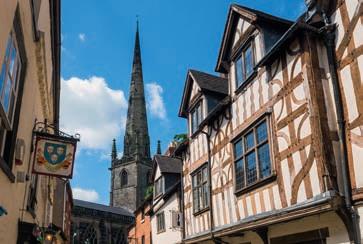
MEANDER THE MINI LAKE DISTRICT
The second-largest network of wetlands in the UK, northern Shropshire’s cluster of glacial lakes (known as meres) has become unofficially known as the mini Lake District. It’s a watery wonderland you can tread on the 11km Meres Meander walk.
Tick off some of its most scenic meres along the route, including the woodland and hay meadow-flanked Colemere and the mirror-like Blakemere, keeping an eye out for wildlife such as dragonflies, kingfishers and goldeneyes. Cut through leafy countryside and end on the shores of The Mere, the largest of north Shropshire’s lakes. Spend some time exploring the historic market town of Ellesmere where you can refuel with a hearty lunch at one of its charming pubs.
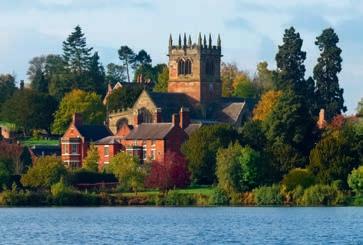
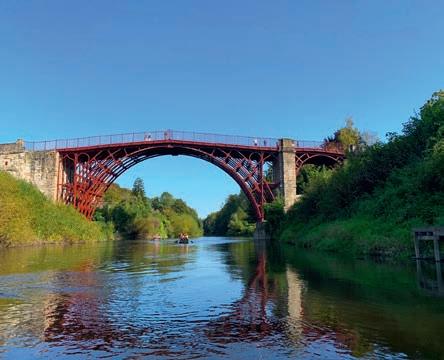
MARVEL AT UNESCO WONDERS
When the world’s first Iron Bridge was built in the 18th century, it was thought impossible something so big could be built from cast iron. But it’s still standing today and the surrounding UNESCO-protected Ironbridge Gorge is also where the Industrial Revolution spawned. The circular 5.5km Iron Trail knits together the revolution’s legacy and the landscapes in which it was forged. You’ll weave past woodlands and waterways that once powered the Industrial Revolution, industrial era homes and close to the site where a Doric Temple once stood. This folly was built by Ironmaster Richard Reynolds so his workers could admire widescreen views of the gorge during their Sabbath Walks.
GET OFF THE BEATEN TRACK
Rewind several centuries and south-west Shropshire was one of England’s most highly coveted patches. Now, there’s rarely a soul around but those wise enough can unravel its ancient legacies on the 10.6km Walking with Offa trail. Begin and end in Clun, a pint-sized village which boasts impressive remains of a Norman Castle. Gently climb the side of the leafy Clun Valley – once King Offa’s stomping ground – before summiting Bury Ditches, one of the country’s best-preserved Iron Age hill forts. Finish in the historic pub The White Horse Inn which has its own micro-brewery. Enjoy a welldeserved post-hike pint and raise a toast to what is bound to be a wonderful British break.
